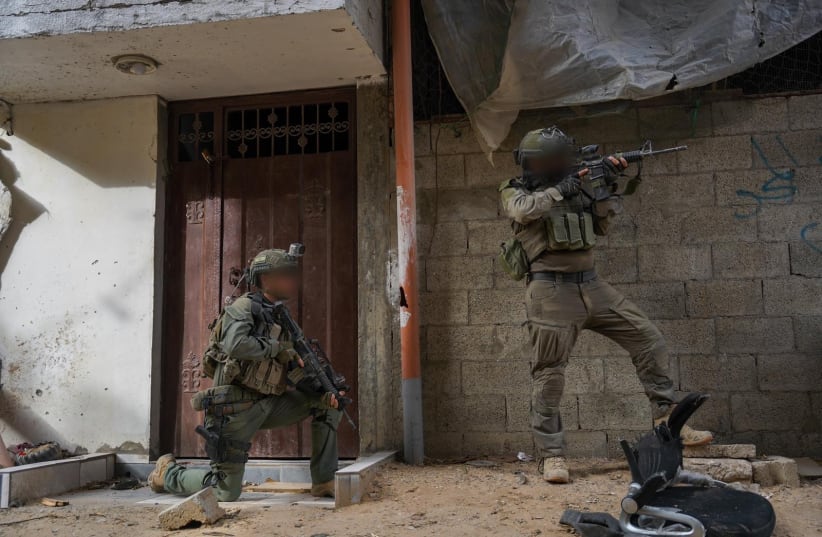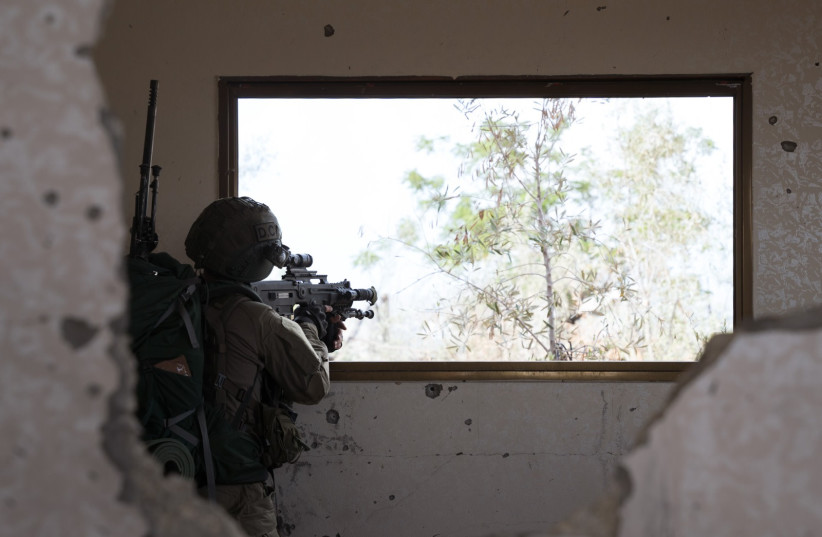by Seth J. Frantzman
Hamas now has to fight in three areas of Gaza against three IDF divisions with fewer resources than before October 7.
 |
Hamas is now facing an Israeli offensive in Gaza on three fronts. Two of the fronts are in the north, in Jabalya and Zaytun. A third is in Rafah. For Hamas, which has felt it was winning the war, the multiple fronts it now faces the IDF on may pose a challenge.
So far, Hamas has proven that it can withstand seven months of war and return to control almost ninety percent of Gaza, as well as rebuild its capabilities. Hamas may now be facing a more complex challenge, and despite its propaganda, it could be destabilized by this current round of fighting. It depends a lot on whether Hamas can reconstitute itself in Khan Younis and how it will seek to respond to the opening of new fronts in northern Gaza. Hamas is already showing that it can respond with rocket fire.
For instance, Hamas fired rockets at Beersheba and Ashkelon twice in the last several days. It has also targeted the Kerem Shalom crossing systematically since May 5. This illustrates how Hamas thinks. It is trying to cut off aid to Gaza via Kerem Shalom. It knows Egypt has closed the Rafah crossing since IDF tanks rolled in there on May 7. Therefore, it hopes it can create chaos in southern Gaza and lead to pressure on Israel to stop the offensive. Israel has instead increased the depth of its forces and called for more people to evacuate Gaza.
Hamas battalions may be evacuating Rafah and moving back toward Khan Younis. Khan Younis is the hometown of Hamas leader Yahya Sinwar. The fact the IDF left Khan Younis in April has allowed Hamas to return there. Former Israeli Prime Minister Naftali Bennett noted on X on May 11 that he didn’t “understand why we pulled out division 98 that had been sealing the Hamas fighters trapped in Rafah. Sort of like removing the lid on a can in which they were trapped, allowing them to disperse all across the Gaza Strip.” Hamas may have benefited from this lack of pressure around Rafah, but it will also have to try to deal with the IDF incursions into Jabalya and Zaytun.


While some 300,000 people evacuated Rafah, another 100-200,000 have been leaving Zaytun and Jabalya. Hamas claims that it continues to fight the IDF in Zaytun and Jabalya and that it is coordinating with other terrorist groups, such as Islamic Jihad. This has been the usual Hamas claim over the last weeks, in which it says it is working with several other groups in Gaza to target IDF forces in the Netzarim corridor. The operations in Zaytun and Jabalia have forced Hamas to shift forces and fight in Jabalya and Zaytun, where it was previously gathering forces and capabilities.
Hamas unable to resist IDF advance
Hamas claims via the pro-Iran al-Mayadeen channel do not appear to amount to serious obstacles to the IDF. The terror group says it has used various types of short-range rockets and mortars in the battle. This is not going to be enough for the group to actually “resist” the IDF advance. Therefore, Hamas will make claims that it has “succeeded” in fighting, and then it will wait for the IDF to withdraw and it will return. It has gotten used to this kind of “cat and mouse” like game in Gaza. It is adapting to the new methods of fighting.
The fact Hamas now has to fight in three areas of Gaza against three IDF divisions is clearly going to be difficult for a terrorist group that has less fighters and less capabilities than in October. It now faces the IDF’s 162nd division in eastern Rafah as well as two IDF reserve brigades in the Netzerim corridor and the IDF’s Nahal brigade in Zaytun as well as the IDF’s 98th division in Jabalya, according to various Israeli reports. Hamas has faced these units before and it has lost. However, the Hamas tactic is to withdraw and disperse its men and wait until the IDF leaves and then re-emerge. Meanwhile Hamas will continue to put out statements to Al-Mayadeen and other outlets highlighting its supposed abilities to continue attacks within Gaza, and also rocket fire at Israeli cities such as Ashkelon, Beersheba and other places.
The question is now whether Hamas could be destabilized via this multi-front battle that is unfolding. Hamas has more limited resources than in the past to try to coordinate all these fronts. It relies on local squads and units. But it has to manage a more complex battle against a far superior IDF.
Seth J. Frantzman
Source: https://www.jpost.com/israel-hamas-war/article-800907
No comments:
Post a Comment